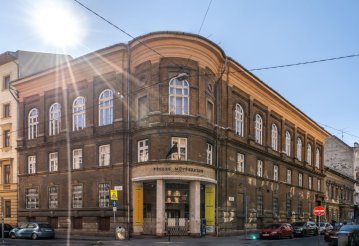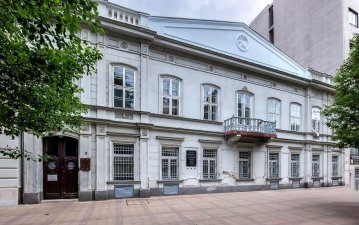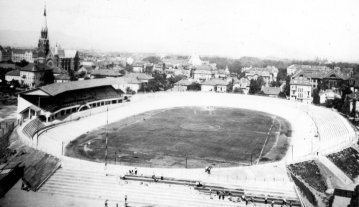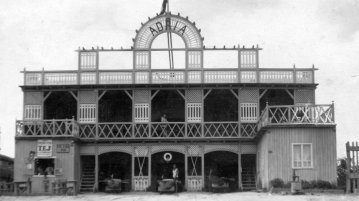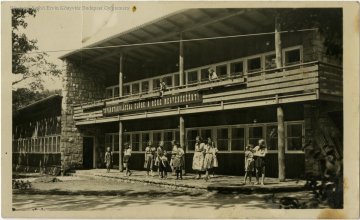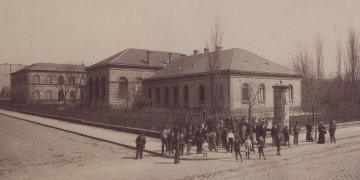
Blázsovics Lívia
Cikkek
The famous Fészek Klub opened 120 years ago
September 7, 2021 at 9:00 AM
The Festők, Építészek, Szobrászok, Zenészek, Énekesek és Komédiások Klubja [Painters, Architects, Sculptors, Musicians, Singers and Comedians Club] or the Fészek Klub opened 120 years ago, on 7 September 1901, on the corner of Kertész Street and Dob Street. The legendary club has been a popular and beloved meeting place for the arts scene for decades, but is now more of an events venue. Just like the club scene of the old days, the original elegant Art Nouveau building and its lavish décor are a thing of the past.
Teleki Blanka opened the first school for girls in Pest in a building on Szabadság Square that still stands today
July 16, 2021 at 9:00 AM
A peculiar twist of fate is that Blanka Teleki opened the first education institution for girls in Pest next to the Újépület ('new building') in Lipótváros, that served as a military barracks, which became her prison in 1851, because according to the imperial authorities the 1848 revolution started from her educational institution. The building, which still stands on the former Promenade, later housed a bank, then the economic police of the Ministry of the Interior, and today the headquarters of the Catholic Camp Bishopric.
The first Hungarian international football match was played at the Millenáris in Zugló - The field called the cradle of Hungarian sports is 125 years old
June 30, 2021 at 4:00 PM
Today, when it comes to the Millenáris everyone thinks of the popular Buda park, although the Pest side also has its own Millenáris. The Millenáris in Zugló, which is the first sports field in Budapest, has been operating for 125 years, and many also refer to it as the cradle of Hungarian competitive sports. The tilted winding cycling track, the velodrome, was already one of the most modern tracks of its time when it was built, after its reconstruction in 1927, tens of thousand supporters flooded the grandstand during the world championship organized here. The first public international football match in Hungary was held here.
The bricklayer building the Town Hall of Buda appears on the Holy Trinity Column
June 15, 2021 at 9:30 AM
Most of the encyclopaedias only describe the life of builder János Hölbling from Buda briefly, although, after the siege of 1686, he took an active part in the reconstruction of the city and the construction of the former Buda Town Hall is also connected to his name. He was such a respected professional in his day that his figure even appears on the Holy Trinity Column in Holy Trinity Square (Szentháromság). The builder of Buda died 285 years ago.
The charming boathouses of Római-part have disappeared
May 21, 2021 at 9:00 AM
The Római-part (Roman Beach) was already a popular resting place on the Danube in the 1900s, and it became really popular in the 1920s. The former boathouses tell us about our architectural, sports and cultural-historical values – today mostly only from photographs.
Tündérbérc to house children's camp again
May 12, 2021 at 9:00 AM
The name of Csillebérc is still associated with the former pioneer camp and the children's railway. Children spent their holidays in the camp known as Pioneer Republic, and later Csillebérc Pioneer Camp, from 1948. Eventually, a lawsuit that lasted 15 years from the 2000s settled the ownership of the area. Soon, a children's camp will open on Csillebérc again.
Budapest is home to one of the oldest veterinary training institutions in Europe
April 28, 2021 at 2:30 PM
The building complex of the University of Veterinary Medicine Budapest has been serving Hungarian veterinary training for exactly 140 years. The building complex in Erzsébetváros, located between today's Rottenbiller and Bethlen Streets, was designed by Imre Steindl, decorated with Zsolnay majolica and stained glass by Miksa Róth. On the World Day of Veterinarians, 28 April, PestBuda presents the history and building complex of the University of Veterinary Medicine Budapest.
Széchenyi cycled for the first time on the banks of the Danube - the postal servants rode velocipedes
April 23, 2021 at 9:00 AM
The first velocipedes on the streets of Pest-Buda caused a great sensation in the late 1860s. By the 1880s, the bicycle had conquered Budapest: associations, cycling schools were formed, social trips, parades and competitions were organized. The capital's postal servants rode velocipedes, and the army also used the vehicles. A World Cycling Championship was also held in the capital. In 1928 the Millenáris Velodrome was the most modern and fastest cycling track in Europe.

